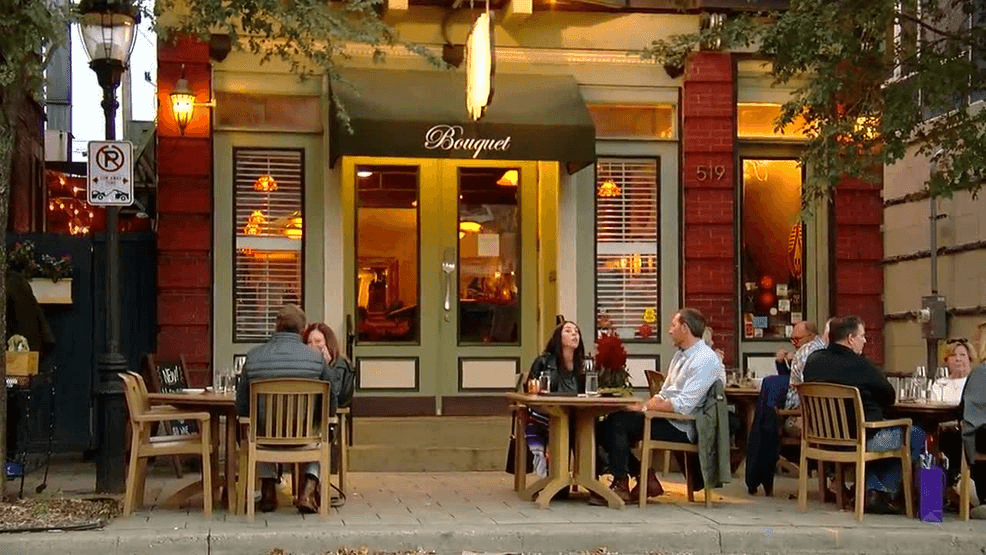Summary
Gold medal wines, food bites from local chefs, perfect Saturday in June weather- those were the hallmarks of the North Coast Wine & Food Festival where more than 115 wineries and chefs were represented. Best of the Best wines from the North Coast Wine Challenge were among the events attractions at the Luther Burbank Center for the Arts.
Source: The Press Democrat

AI News Q&A (Free Content)
Q1: What are the main attractions and features of the North Coast Wine & Food Festival?
A1: The North Coast Wine & Food Festival is celebrated for its gold medal wines and gourmet food bites from local chefs. The festival features over 115 wineries and chefs, showcasing the Best of the Best wines from the North Coast Wine Challenge. The event is held at the Luther Burbank Center for the Arts and is known for its perfect June weather, making it an ideal experience for wine and food enthusiasts.
Q2: How does the North Coast Wine & Food Festival contribute to the local economy?
A2: The festival significantly boosts the local economy by attracting tourists and wine enthusiasts, which in turn supports the local wineries and restaurants. Events like these increase visibility and sales for local businesses, creating a ripple effect that benefits the entire community. Additionally, they help in promoting the North Coast region as a premier destination for wine and culinary experiences.
Q3: What does recent research say about minimizing food miles in recipe preparation?
A3: Recent research, such as the Sustainable Recipes project, focuses on minimizing food miles by connecting food recipes with the closest organic providers. This approach not only reduces the carbon footprint associated with food transportation but also supports local farmers and businesses. By recommending recipes based on proximity to ingredient sources, consumers can enjoy fresher products while contributing to environmental sustainability.
Q4: What are the principles behind food-bridging and food-pairing in traditional cuisines?
A4: The food-bridging hypothesis suggests that ingredients which do not share strong affinities may become compatible through a chain of pairwise affinities. This contrasts with the food-pairing hypothesis, which involves mixing ingredients with similar chemical compounds to intensify flavor. Both principles are present in traditional cuisines, with regions like East Asia often avoiding both, while Latin American cuisines embrace them. These principles help explain the complex flavor profiles found in various global cuisines.
Q5: What are the potential health implications of synthetic food ingredients?
A5: Synthetic food ingredients can have various health implications, including potential allergic reactions and long-term health effects. Research emphasizes the importance of using safe and allowed ingredients, with a focus on natural and organic options. Consumers are encouraged to be cautious of synthetic additives and to prefer foods with transparent ingredient lists to minimize health risks.
Q6: How are technological advancements influencing the wine and food industry?
A6: Technological advancements are playing a pivotal role in the wine and food industry by enhancing production efficiency, improving quality control, and facilitating innovative marketing strategies. Technologies such as precision agriculture, IoT in vineyards, and digital marketing platforms are helping producers reach a wider audience and optimize their operations. These innovations contribute to sustainable practices and allow for a more personalized consumer experience.
Q7: What are some safe food ingredients consumers should look for when selecting products?
A7: Consumers should look for food ingredients that are natural, minimally processed, and free from artificial additives. Ingredients such as organic grains, fruits, and vegetables, as well as natural preservatives like vinegar or salt, are generally considered safe. Reading labels and choosing products with short, recognizable ingredient lists can help ensure food safety and quality.
References:
- Sustainable Recipes. A Food Recipe Sourcing and Recommendation System to Minimize Food Miles
- Food-bridging: a new network construction to unveil the principles of cooking
- Development and characterization of multifunctional phytonanoemulgels based on licorice extract and biocompatible polymers
- Comparative effects of vegetarian diet and rendered animal by-product on the chicken gut


